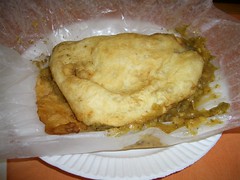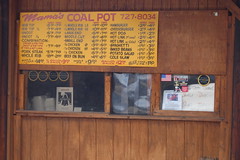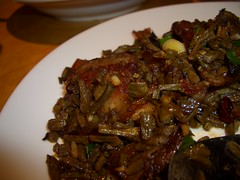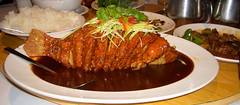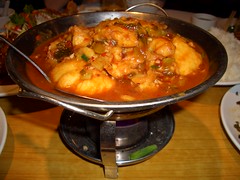Doubles are largely unknown here. It's not surprising, there are probably only a few restaurants in New York that serve them. In Trinidad, though, they are everywhere, and are one of the most pervasive street foods on the island. A double is two pieces of deep-fried chickpea batter, with curried chickpeas inside. That's a lot of chickpeas. The key, though, is the chutneys and pepper sauce that are put in the double. A nice, fresh double with a spicy and tangy filling will bring tears to your eyes. If you've had chole bhature, it is very similar, except the flatbread it is on is much thicker.
Legend has it that doubles were originally a single piece of bara (the chickpea patty), with the curried chickpeas on top, but one kid insisted that two pieces of bara be used to make a sort of sandwich. The "double" option became popular, and this dish was born.
A little while ago, my friend Shantanu and I ate at A & A "'D' Original Doubles Shop". Read the 'D' as a Trini "the". It was cheap, I think $1 or so per double. It wasn't as fresh as you get in Trinidad, where they often fry it up in front of you. But, it was reasonably fresh. And it was delicious! It really doesn't look like much, and it's a complete mess to eat, but that's just the way doubles are.
I'd mention that if you are in Richmond Hill you should go eat there, but let's face it: people don't just pass through Richmond Hill all that often. Either you live their and already know it, or you are going to eat some Trinidadian or Grenadian food. Well, if you do, stop by and get a double before your meal, and make sure to put extra chutneys and pepper sauce on it.
